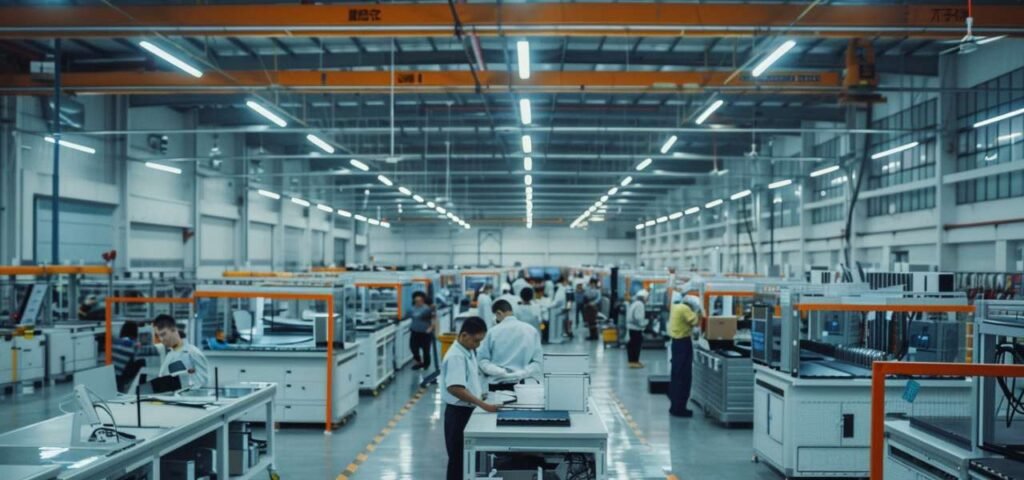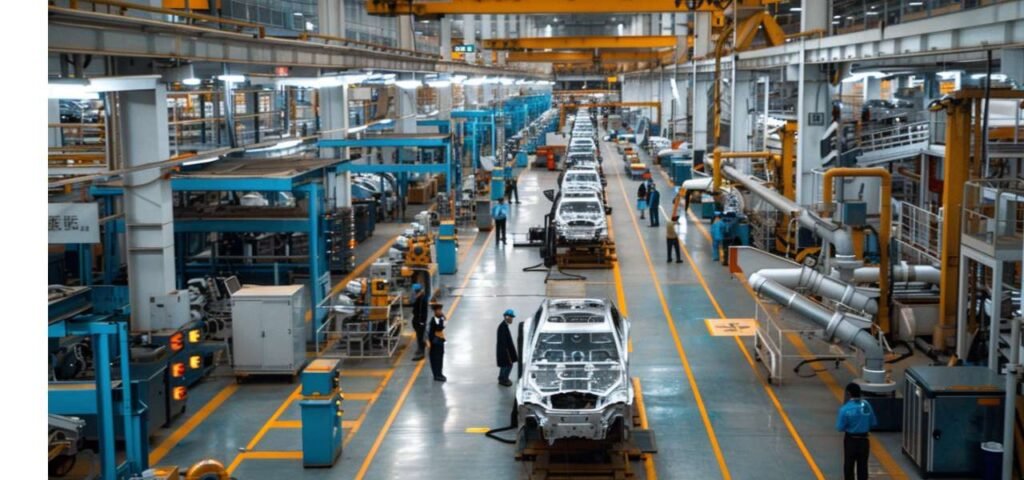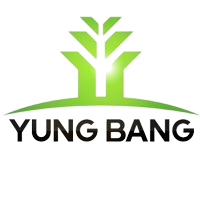1.Статус развития литиевых батарей в Китае
В 2023 году основными темами будут переизбыток и сокращение запасов. литиевая батарея В течение всего года в отрасли наблюдался рост цен. На фоне избытка мощностей сектор литиевых батарей столкнулся с ценовым давлением на элементы и материалы. В сочетании с тенденцией к снижению цен на карбонат лития, которая привела к потерям товарных запасов в смежных сегментах, общая прибыль цепочки производства литиевых батарей оказалась под давлением. Быстрое наращивание мощностей привело к обострению ценовой конкуренции в отрасли, что ознаменовало новый этап оптимизации в развитии отрасли. Если заглянуть в будущее до 2024 года, сможет ли общая ситуация на рынке литиевых батарей восстановиться? Каковы инвестиционные возможности в различных сегментах?
В четвертом квартале 2020 года индустрия литиевых аккумуляторов вступила в период высокого процветания. Во втором квартале 2021 года промышленная цепочка начала осуществлять значительные капитальные затраты на расширение мощностей. Поскольку цикл расширения цепочки производства литиевых батарей в основном составляет от одного до полутора лет, некоторые сегменты цепочки начали сталкиваться с избыточным предложением со второго квартала 2022 года, а большинство сегментов столкнулись с избыточным предложением и снижением цен с четвертого квартала 2022 года. В первом квартале 2023 года, в условиях колебаний темпов роста терминалов и сокращения запасов, рентабельность отраслевой цепочки быстро снизилась до уровня разумной рентабельности производства и продолжала снижаться со второй половины 2023 года по первый квартал 2024 года. В 2024 году строительство мощностей на внутреннем рынке замедлилось, чтобы продолжить переваривание мощностей, а индустрия литиевых батарей активно развивалась за рубежом.
В связи с замедлением расширения мощностей на внутреннем рынке в 2024 году ожидается, что в первом квартале будет наблюдаться давление из-за эффекта межсезонья. После достижения дна ситуация со спросом и предложением будет постепенно улучшаться в течение года, и ожидается, что к 2025 году спрос и предложение постепенно сбалансируются. Длинные хвостовые мощности могут постепенно очищаться, а концентрация отрасли будет расти. На фоне обострения конкуренции внутри страны и ужесточения политики локализации в Европе и США различные сегменты производственной цепочки литиевых батарей активно расширяются за рубежом. Ожидается, что постепенное наращивание зарубежных мощностей после 2025 года даст новые точки роста отечественной индустрии литиевых батарей.

2.Текущая ситуация и перспективы развития промышленной цепи литиевых батарей:
В январе цены стабилизировались слабо, а график производства сократился по сравнению с предыдущим месяцем, что повлияло на цены. Что касается ресурсов, то цены на литий и никель выросли, и в краткосрочной перспективе цены могут продолжить слабо стабилизироваться. Что касается основных материалов, то, за исключением аккумуляторных элементов, диафрагм сухого способа производства и материалов для положительных электродов, цены по всей отраслевой цепочке демонстрировали различную степень снижения. Что касается вспомогательных материалов, то цены на обработку медной фольги практически не изменились, а цены на обработку алюминиевой фольги продолжали снижаться. Что касается планирования производства, то в феврале оно снизилось на 15%-20% по сравнению с предыдущим месяцем, но запасы в отрасли невелики. Фундаментальные показатели отрасли более стабильны, чем в 2023 году, и с ожидаемым восстановлением спроса в марте-апреле, как ожидается, начнется накопление запасов, что улучшит планирование производства в отраслевой цепочке. С учетом того, что в Китае количество автомобилей с интеллектуальным управлением превысило 200 000 единиц, в Европе наступил переломный момент в сфере хранения домашних вещей, а в США появились мега-хранилища, в марте-апреле ожидается дополнительный спрос на пополнение запасов, а показатели планирования производства значительно улучшатся месяц от месяца. Среднесрочная логика развития сектора остается неизменной: во-первых, ожидается, что уровень загрузки мощностей достигнет переломного момента во второй половине 2024 года, а некоторые сегменты вернутся к разумному уровню операционных показателей в 2025 году; во-вторых, европейские выбросы углерода и модели класса A0, облегчение цепочки поставок в США и ожидаемое снижение внутренних цен на батареи, как ожидается, сделают среднесрочные ожидания спроса положительными, и сектор выйдет из устойчивой фазы. С точки зрения конкурентной среды, в 2023 году CR3-рейтинг будет выглядеть следующим образом: диафрагма > электролит > положительный электрод из фосфата железа лития > материалы отрицательного электрода > медная фольга для литиевых батарей > тернарный положительный электрод.
(1) Литиевая руда в процессе разведки и добычи:
Карбонатные литиевые проекты сложны в разработке, имеют длительные циклы расширения и нестабильные мощности. В период взрывного спроса на литиевые батареи с 2020 по 2022 год цены на карбонат лития выросли с минимального уровня в 40 000 до более чем 600 000 юаней. В условиях продолжающейся избыточной прибыли предложение карбоната лития быстро расширялось, включая отечественные соляные озера, слюду, Австралию, Южную Америку и Африку, все из которых ускорили высвобождение своих мощностей во второй половине 2023 года. В то же время темпы роста индустрии литиевых батарей в 2023 году замедлились, а давление, вызванное деблокированием, еще больше усилило колебания спроса, что привело к снижению цен на карбонат лития до уровня около 100 000 юаней к концу 2023 года.
С точки зрения спроса и предложения, цены на карбонат лития в 2024 году все еще находятся под понижательным давлением, но постепенно подтягиваются к себестоимости отечественной слюды и африканских шахт, и, как ожидается, будут поддерживаться в диапазоне 70 000-80 000 юаней. Что касается ритма, то ожидаемый подъем спроса и дополнительный спрос на пополнение запасов в марте-апреле, вероятно, стабилизируют или даже временно поднимут цены на карбонат лития, после чего по мере высвобождения предложения будет наблюдаться тенденция к снижению.
(2) Спрос на нисходящем потоке:
Новые энергетические транспортные средства и накопители энергии продолжают стимулировать устойчивый рост спроса на литиевые батареи.
Производство и продажи автомобилей: В январе внутренний рынок продемонстрировал значительный рост в годовом исчислении, при этом Европа продолжила восстановление, а США немного отстали от ожиданий. В январе внутренний рынок продемонстрировал рост в годовом исчислении благодаря низкой базе и слабой тенденции к росту проникновения. По данным Китайской ассоциации автопроизводителей (CAAM), оптовые продажи в январе составили 682 000 автомобилей, увеличившись за год на 75,3%, а уровень оптового проникновения составил 33%, что на 5,8 процентных пункта больше, чем в прошлом году. С точки зрения структуры транспортных средств, доля подключаемых гибридных электромобилей (PHEV) увеличилась, а модели с увеличенным радиусом действия внесли положительный вклад в прирост. В январе на долю PHEV пришлось 41% продаж, что на 11 процентных пунктов больше, чем в прошлом году. С точки зрения распределения по сегментам, продажи электромобилей (EV) увеличились в обоих концах, а модели PHEV в сегменте B продемонстрировали значительный рост. Что касается корпоративного уровня, то заказы Huawei на новые автомобили показали высокие результаты, Geely New Energy достигла исторического максимума, а продажи BYD снизились; с точки зрения моделей, BYD и Tesla занимают лидирующие позиции по продажам, а Wuling M7 и Jinko 007 быстро набирают обороты. Европейский рынок продолжил свое восстановление в январе, показав высокие темпы роста в годовом исчислении на фоне низкой базы. Темпы роста в Германии и Великобритании замедлились по сравнению с прошлым годом, в то время как Франция ускорила электрификацию. Совокупные продажи в семи европейских странах составили 728 000 автомобилей, увеличившись за год на 12,7%, а за месяц - на 10,8%. Еженедельное отслеживание данных с 1 по 20 февраля показало увеличение совокупных продаж на 12% в шести европейских странах на 24 200 автомобилей. Продажи в США в январе оказались немного ниже ожиданий: продажи новых автомобилей составили 116 000 единиц, рост за год - 17%, снижение за месяц - 20,1%, уровень проникновения - 10%, рост за месяц - 0,5 процентных пункта.
С точки зрения спроса, отрасль литиевых батарей по-прежнему имеет широкие перспективы роста в 2024-2025 годах с появлением позитивных сигналов. Ожидается, что два основных направления применения литиевых батарей - новые энергетические транспортные средства и накопители энергии - сохранят высокую скорость роста, что окажет сильную поддержку спросу на литиевые батареи. Во-первых, стоит ожидать строгой оценки выбросов углекислого газа в Европе в 2025 году и роста потребления в Европе. Это включает в себя малолитражные автомобили уровня A0, представленные Renault, PSA, FCA, MG, а также новые автомобильные циклы, начинающиеся в 2025-2026 годах у немецких автопроизводителей. Во-вторых, после введения в США закона IRA и правил FEOC ограничения на выход китайских промышленных цепочек на американский рынок повлияют на спрос, но материальные звенья китайской промышленной цепочки в 2025 году будут строиться за рубежом, а аккумуляторы также выйдут на американский рынок через лицензирование технологий и совместные предприятия. Возвращение китайской промышленной цепочки на американский рынок, как ожидается, повысит спрос. Наконец, на внутреннем рынке после снижения цен на карбонат лития ожидается переломный момент в спросе. Во-первых, ожидается, что экономичные модели по цене от 50 000 до 150 000 юаней повысят экономическую эффективность, а автопроизводители ускорят процесс планирования поставок. Во-вторых, ожидается, что наступит переломный момент в уровне проникновения EV и мощности на автомобиль, что еще больше повысит спрос на силовые батареи. При положительных ожиданиях со стороны спроса, на фоне замедления расширения предложения в отраслевой цепочке, ожидается постепенное наступление переломного момента в загрузке производственных мощностей со второй половины 2024 по 2025 год, а рентабельность также будет иметь некоторые возможности для восстановления благодаря расширению масштабов и контролю затрат.
Что касается накопителей энергии, то в 2024 году ожидается замедление темпов повышения процентных ставок в США. При снижении стоимости финансирования ожидается дальнейшее увеличение спроса на установки хранения энергии. По прогнозам West Securities, мировой спрос на новые типы накопителей энергии в 2025 году составит 156,3 ГВт/384,4 ГВт-ч, с темпами роста +94% и +106% за 2022-2025 годы соответственно. Ожидается, что две основные сферы применения терминалов - новые энергетические транспортные средства и накопители энергии - будут сохранять высокую скорость роста в будущем, оказывая сильную поддержку спросу в отрасли литиевых батарей.

(3) Установка батареи:
В январе объем установок на внутреннем рынке удвоился по сравнению с аналогичным периодом прошлого года, причем производители второго эшелона продемонстрировали высокие темпы роста. В январе объем установки батарей на внутреннем рынке составил 32,3 ГВт-ч, увеличившись за год на 100,2%. С точки зрения внутренней конкурентной среды, олигопольное положение CATL осталось неизменным. В январе CATL установила 16,0 ГВтч, что на 123% больше, чем в прошлом году, а ее доля рынка составила 49,4%, что на 5 процентных пунктов больше, чем в прошлом месяце. Без учета BYD доля рынка составила 60,7%, увеличившись на 3 процентных пункта по сравнению с предыдущим месяцем. После обеспечения сотрудничества с новыми моделями автомобилей Huawei, резкий рост продаж новых автомобилей привел к увеличению данных по установке. На зарубежном рынке совокупный объем установок достиг 319,4 ГВт-ч в 2023 году, увеличившись на 43,2% в годовом исчислении. В декабре CATL установила 9,4 ГВт-ч, а ее доля на рынке составила 25,8%. В 2023 году общее количество установок в мире составит 705,5 ГВт-ч, что на 39% больше, чем в прошлом году, и CATL сохранит лидерство по доле рынка.
(4) Технологические аспекты:
Снижение стоимости остается основным направлением конкурентной борьбы в основной цепочке промышленности. В 2023 году на рынке новых энергетических транспортных средств началась волна снижения цен. Ожидается, что в долгосрочной перспективе на фоне изменения роста спроса и обострения конкуренции в отрасли литиевых батарей сохранится потребность в снижении затрат. В условиях структурного избытка мощностей производители аккумуляторов и транспортных средств будут активно продвигать технологические инновации в 2023 году. Что касается положительных электродов, то основными направлениями являются литий-железо-фосфат на основе марганца и высоконикелевый тернариум. Быстрая зарядка, композитная медная фольга, батареи 4680 и другие новые технологии все еще находятся в процессе постепенного прорыва.
Быстрая зарядка: Ожидается, что модели, оснащенные быстрой зарядкой 800 В, будут выпускаться в больших количествах, и после того, как CATL выпустила батарею Shing Charge, она быстро достигла сотрудничества с 7-8 производителями автомобилей. Ожидается, что быстрая зарядка со скоростью зарядки более 4C постепенно станет мейнстримом. Темпы продвижения продуктов для быстрой зарядки значительно ускорились. Мы ожидаем, что уровень проникновения быстрой зарядки составит 2% в 2023 году и достигнет 12% в 2024 году. Сопутствующие материалы и компоненты, как ожидается, выиграют.
Композитная медная фольга: Предприятия, быстро продвигающиеся в производстве композитной медной фольги, завершили тестирование и сертификацию продукции в 2023 году. Ожидается, что в 2024 году они войдут в стадию массового производства, снижения себестоимости и переговоров о цене.
4680 батарей: В 2023 году Tesla все еще сталкивается с некоторыми трудностями в выпуске продукции, а в 2024 году ожидаются дальнейшие прорывы и новые применения.
Кремний-углеродные отрицательные электроды: В ближайшие несколько лет ожидается ускорение применения кремний-углеродных электродов. Во-первых, потребительские батареи ускорят применение кремнийуглерода ради повышения удельной емкости и скоростных характеристик. Во-вторых, после массового выпуска батарей 4680 ожидается увеличение уровня проникновения цилиндрических батарей, что будет способствовать внедрению кремний-углеродных схем. В-третьих, благодаря прогрессу в технологии кремнийуглерода, контролю расширения и снижению стоимости, ожидается, что применение квадратного кремнийуглерода также ускорится, что откроет возможности для массового производства кремнийуглерода.
Твердотельные батареи: В последнее время также наблюдается значительный прогресс. Компания NIO в Китае применила полутвердотельные батареи Weilan, а Toyota также объявила о планах по созданию твердотельных батарей.
3.Общая оценка промышленности литиевых батарей
В целом, цена на карбонат лития вступила в фазу дна, а приостановка работы австралийских шахт еще больше усилила ожидания стабилизации цен на литий. После того как компании, зарегистрированные на бирже в отрасли литиевых батарей, создали резервы под обесценение активов, риски, связанные с запасами, постепенно были устранены; капитальные затраты в отрасли замедлились до низкого уровня, а структура отрасли была еще больше оптимизирована. В связи с продолжающимся ростом продаж новых энергетических автомобилей и устойчивой тенденцией высокого роста установок для хранения энергии ожидается, что отрасль стабилизируется и восстановится в первой половине 2024 года.
Недавно Цао Хайхуа, старший аналитик отдела электроэнергетического оборудования и новой энергетики компании Changjiang Securities, выразил относительно оптимистичное отношение к тенденциям развития индустрии литиевых батарей в 2024 году. С одной стороны, зарубежные рынки откроют для китайской промышленности литиевых батарей пространство для роста спроса, и хотя существуют некоторые торговые барьеры, соответствующие решения могут быть найдены. С другой стороны, продолжающиеся прорывы в новых технологиях, таких как быстрая зарядка и батареи 4680, также создадут инвестиционные возможности для отраслевой цепочки.

